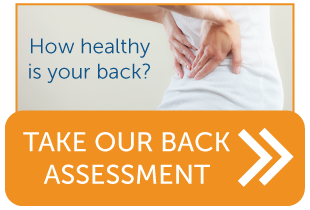CrossFit was created in 1996 in Santa Cruz, California. It is a strength and conditioning program that focuses on varied, high-intensity, and functional movement using a mix of:
- Aerobic exercise
- Body weight exercises
- Weightlifting
Each CrossFit session is comprised of a WOD or “workout of the day,” which is frequently scored and ranked to encourage competition between members.
Methodology
Since its inception, Crossfit’s claimed benefits for physical performance have yet to be substantiated by medical evidence.
Crossfit gyms are independent licensed facilities, so coaches are credentialed and approved in different environments, which can lead to variation in programming and equipment knowledge as well as technical expertise.
The basis for Crossfit is intensity—the founder of Crossfit Inc., Greg Glassman, said that this is essential for results and is measurable by the amount of power you put into a workout.
The more you do in less time—or the higher the power output—the more intense the effort. The claim is that this methodology can lead to dramatic gains in fitness.
Crossfit was designed to challenge the fittest individuals in the world while still universally scalable to the individual; however, they do not change the program.
Risk of Injury
The Crossfit Inc. website says, “The needs of Olympic athletes and our grandparents differ by degree, not kind.” However, the risk of injury associated with Crossfit training has been highly controversial since its inception.
Several complaints are that CrossFit:
- Uses dangerous movements
- Uses inappropriate levels of intensity
- Allows under qualified individuals to become trainers
The impetus of the risk is performing the moves with poor technique. Since heavy weightlifting is a key part of Crossfit, performing moves incorrectly and without proper training can be a harm to the body and puts participants at risk for developing exertional rhabdomyolysis, which is the breakdown of muscle due to extreme physical exertion.
Minimizing Your Risk of Injury
While there is not definitive evidence that participants in Crossfit will develop any of these issues, it is always important to discuss your current/future exercise routine with your physician and physical therapists to make sure it is appropriate for you.
You should also get proper training and take classes before participating in new physical activities. Regular exercise can positively impact health by promoting blood flow and healing the spine.
Strengthening the abdominal and back muscles will help improve spine stability and decrease the risk of injury. There are some lower impact exercises which can give you all of the benefits of exercise while minimizing your risk of injury. People should always be cautious of exercise fads and fully research “new” trends.
Low Impact Exercises
Here are some low impact exercises that can benefit your health and your spine.
Cycling
A great preventative exercise, riding a bicycle is both non-weight bearing and achieves results. Bike riding improves lower body muscular strength and overall endurance.
It can increase your flexibility, which reduces your risk of back pain and injury, and is non-weight bearing, so it places less stress on the spine, hips and knees. In addition to these benefits, it provides great cardiovascular and conditioning exercise.
Swimming
Swimming is a great exercise for preventing or recovering from back pain. This aerobic exercise is joint-friendly and can help build muscle without placing strain on the back.
Certain strokes may irritate back or neck pain so be sure to consult your physician before beginning a swimming regimen. Water aerobics is another very low impact cardiovascular workout that can strengthen muscles and endurance.
Elliptical Work
Unlike a treadmill, walking or running on an elliptical machine does not cause harmful pressure to joints, providing a cardiovascular workout that is low impact while helping to improve lean muscle mass.
Elliptical machines also use a passive motion, stopping when the individual stops, which can be safer than a treadmill.
For all exercises, maintaining correct form is key. Maintain an upright posture on the elliptical machine and avoid stooping over, particularly when fatigue begins.
We Can Help!
If you have suffered a spine injury due to physical activity, request an appointment with us. We’ll help assess your pain and determine the individual treatment plan for you.



